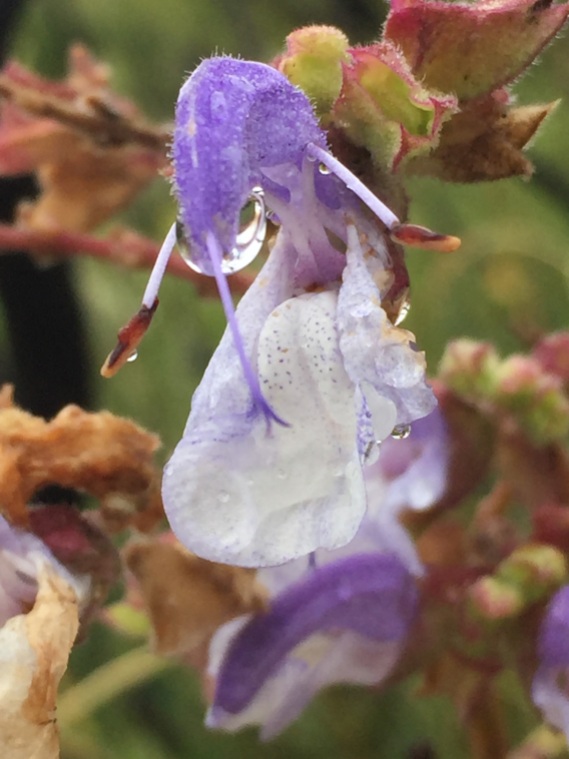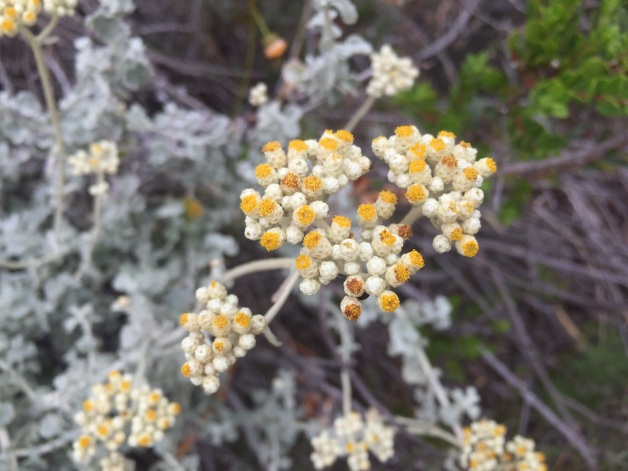Maverick
One of the great joys here on the farm is taking the new puppy running for the first time. We have to wait patiently though. It’s not good for Irish wolfhounds to start exercising too early. We probably do go too soon – at the age of about eight months I can resist no more. But our “running” involves a lot of walking up the mountain and stopping to take photos of flowers. They run free of course, so can stop and start as much as they want. All our hounds have stayed remarkably well and fit into their old ages, so I believe the regular free exercise does no harm.
Maverick arrived in August, delivered, most kindly by his Johannesburg breeder, with a worried expression on her face. “He’s a chainsaw teddybear” she said. “Full of love, but I’m afraid he bites.” Boy did he bite! Easy to train, adorable most of the time, but he must have had painful teething because he would go a bit crazy in the evenings and bite and bite. Because of it he was a little hard to love. Particularly because we were worried about the grandchildren coming for Christmas – we would have three children under four in the house along with an enormous biting dog. I foresaw an unhappy Christmas for Maverick, locked up away from the family.
Wolfhounds are famously good with children and Maverick completely won our hearts with his gentleness towards them. Of course he’s a great galumphing puppy, so the odd swipe of a tail would cause a toddler to all over and cry for a moment. But when they left after 10 days not one of them went away afraid of a big dog, he was curious, enthusiastic, and utterly gentle. After that, we noticed his biting had almost completely stopped.
Now it appears that he bites only me, and only when I’ve been away, so it’s become some function of separation anxiety. Then he settles down. His bites are not vicious at all, but his mouth is huge, even for a wolfhound, so they are intimidating.
Suddenly the sweetest puppy has emerged. He is a bit of a homeboy, no wandering tendencies so far. He’s never far from one of us. When there is action on the farm he will take part enthusiastically, putting his great nose into everything until he gets too hot and then he settles, panting, in a shady spot. No matter what I’m doing, from time to time there will be a quick nudge; Maverick checking in to let me know he’s near. I’ve been training him to heel, which he doesn’t do yet, but when we run, he will often trot along for a while at my left heel, nudging my hand from time to time, just to let me know he’s there. He’s goofy, a lovely golden brindle. Meabh adores him and he loves her. He is especially fond of Jemima Chew who held herself aloof for ages and then one day starting stealing his toys and teasing him for hours.
At Christmas we always make a special trip up to the river to find the Gladioli lileaceus. During the day it’s a drab thing, boring crinkled yellow trumpets. You have to visit it at sunset when the flowers open and turn mauve and cream and it emits the most wonderful clove-spice smell. All in order to attract the very specific moth that pollinates it. These miraculous flowers survived the fire and emerged as always in Christmas week. The book says they flower in spring, between August and November. Here they leave it a little later, a Christmas present from the farm.

Gladiolus liliaceus
By January the rain, what little there is, tends to stop and we face three long months of unrelenting sun, wind and dust. Ironically as I write these words there has been a respite and an unseasonal sprinkling of rain today. The flowering season draws to a close, but not without some stunning final flourishes. One of the best is Tritoniopsis triticea, a fynbos bulb that waits until well into January to display its lovely coral flowers. Coral is always hard to photograph, but luckily there are masses of these this year and I managed to get some nice shots.
Another favourite is Wachendorfia paniculata, which I love for the name as much as for the flower.
Microdon dubius grows along the roads and in the fields, a strange but charming little flower.
Today I was up helping Peter in an area where he thinks we may find water. I saw this, which I’d never seen before. It’s in the book, but much to my surprise it’s an uncommon invasive alien. Known as Hibiscus trionum it’s very pretty but it doesn’t belong here.
What absolutely does belong here and is flowering profusely in the heat of summer is Salvia africana. This flowers all year round but does particularly well in January.
While up on the mountain today I saw this blue pea, a plant that looks very like the broom you find in Italy, but with a blue flower. I remember seeing this years ago at this time of year, and then never seeing it again. Here it is, growing in profusion at the bottom of a damp slope. It’s Psoralea aphylla, not particularly common but it does like damp places.
Helichrysum is used in hanging baskets and pots all over Europe, thanks to its ability to endure very dry conditions. I love that Helichrysum patulum grows wild here, something so familiar when I was growing up, and now a part of the landscape and the life here on our beloved mountain.
Sweet Maverick has all this to explore and understand. He tries to help when I take photos, crushing flowers with his great paws, sniffing them and occasionally eating them. I am so looking forward to many happy years of running together with this giant gentle friend.

























